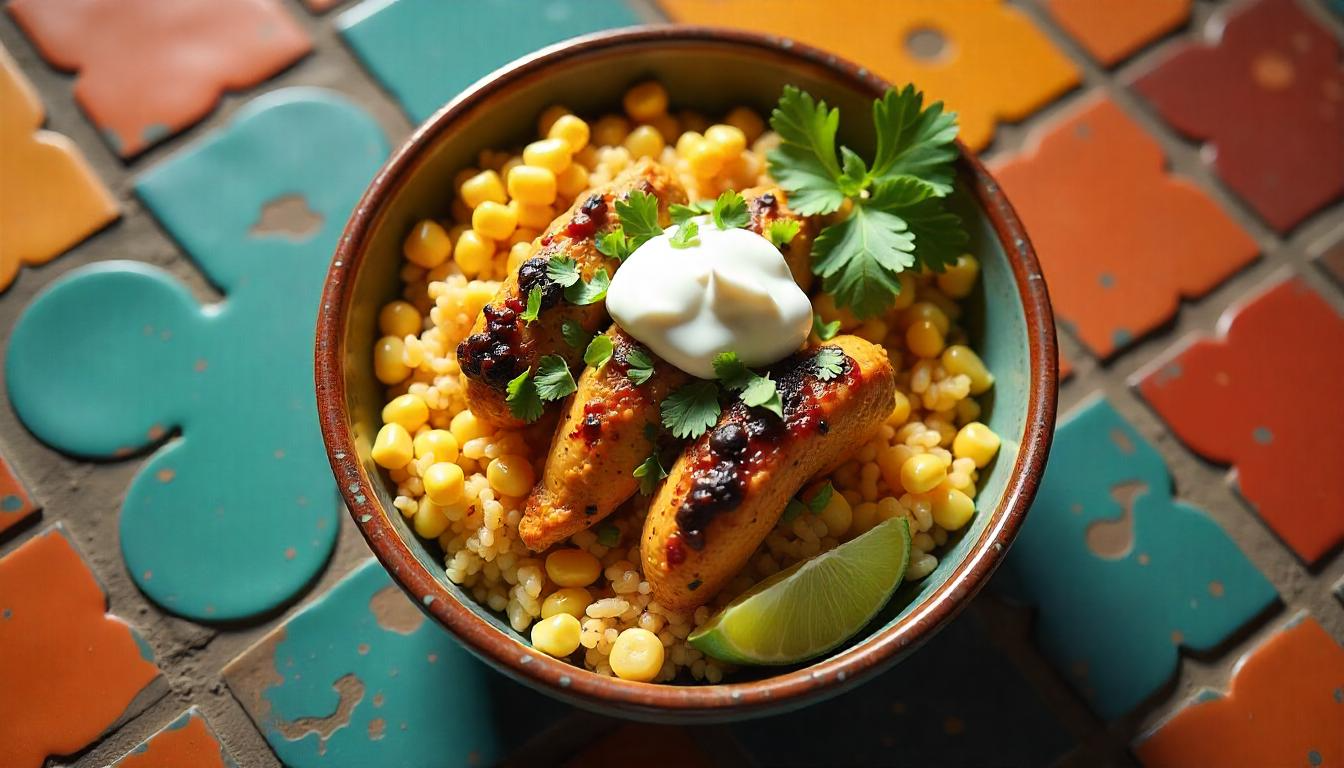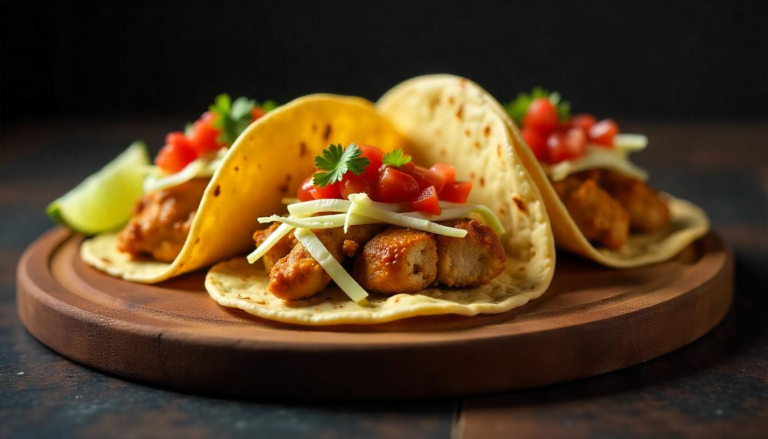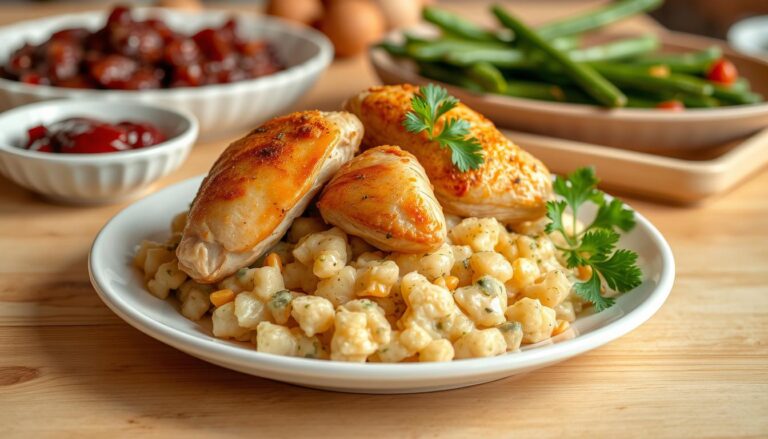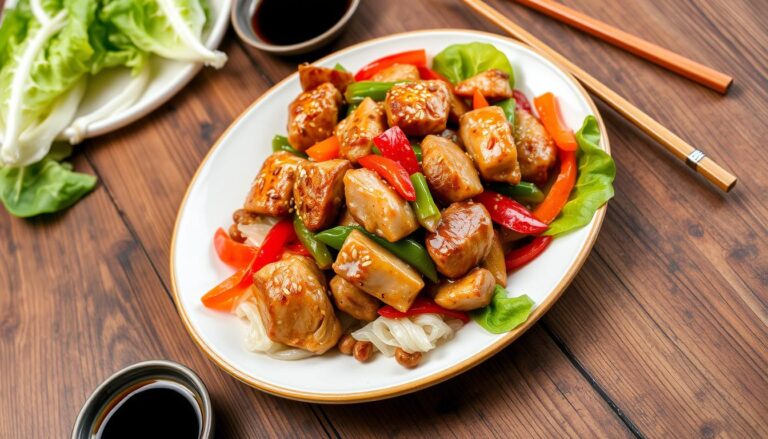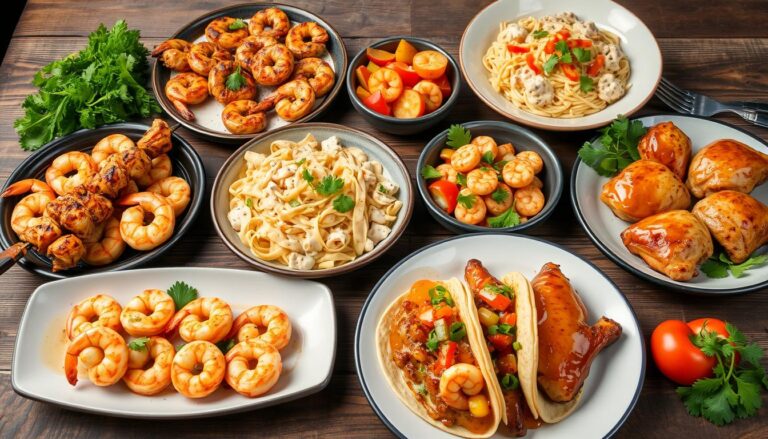Chipotle Chicken: How to Master the Perfect Marinade in 3 Steps
Table of Contents
Introduction
Have you ever wondered why restaurant chipotle chicken tastes so much better than your home attempts? That smoky, spicy, melt-in-your-mouth tenderness seems impossible to recreate in your kitchen – but what if you’ve just been missing a few simple secrets all along?
The truth is, amazing chipotle chicken doesn’t require professional equipment or exotic ingredients. What it does need is understanding the three key steps that transform ordinary chicken into something extraordinary. Today, I’m sharing what took me years to perfect – a foolproof method that will change how you marinade chicken forever.
Overview: What Makes This Recipe Special
This chipotle chicken recipe stands out because it focuses on building deep, complex flavors through a simple three-step marinade process. Unlike other recipes that just mix ingredients and hope for the best, this method ensures the flavors actually penetrate the meat.
Time requirement:
- Prep time: 15 minutes
- Marinating time: At least 2 hours (overnight preferred)
- Cooking time: 15-20 minutes
Difficulty level: Easy to medium. The techniques aren’t complicated, but timing matters.
The result is juicy, smoky chicken with a perfect balance of heat that’s versatile enough to use in tacos, burritos, salads, or as a main dish. Best of all, you’ll be using simple ingredients you can find at any grocery store.
Essential Ingredients: The Building Blocks of Perfect Chipotle Chicken
The Chicken Base
- Boneless, skinless chicken thighs (2 pounds): Thighs stay juicier than breasts and absorb marinade better. They’re also more forgiving if slightly overcooked.
- Substitution: Chicken breasts work if you prefer white meat, but reduce cooking time to prevent drying.
The Marinade Magic
- Chipotle peppers in adobo sauce (3-4 peppers plus 2 tablespoons sauce): The star ingredient that provides smoky heat and distinctive flavor.
- Substitution: 1 tablespoon chipotle powder mixed with 1 tablespoon tomato paste and ½ teaspoon liquid smoke.
- Garlic (4 cloves): Fresh garlic provides aromatic depth that powdered versions can’t match.
- Substitution: 1 teaspoon garlic powder if fresh isn’t available.
- Lime juice (¼ cup, about 2 limes): The acid tenderizes the meat and brightens flavors.
- Substitution: Lemon juice or apple cider vinegar.
- Honey or brown sugar (2 tablespoons): Balances heat and helps with caramelization when cooking.
- Substitution: Maple syrup, agave nectar, or regular sugar.
- Olive oil (¼ cup): Helps marinade cling to chicken and aids in moisture retention.
- Substitution: Any neutral cooking oil.
- Cumin (2 teaspoons): Provides earthy undertones that complement the smoky chipotle.
- No real substitute, but ground coriander can provide a different but complementary flavor.
- Oregano (1 teaspoon): Traditional Mexican oregano works best for authentic flavor.
- Substitution: Regular oregano or marjoram.
- Salt and black pepper (1 teaspoon each): Enhances all other flavors.
Why These Ingredients Matter
The combination of acid (lime), fat (oil), and flavor carriers (spices and chipotle) creates a balanced marinade that tenderizes while infusing flavor. The chipotle peppers provide both smoky notes and heat, while the honey creates caramelization when cooking, leading to those delicious charred edges everyone loves.
Step-by-Step Instructions: The 3-Step Marinade Method
Step 1: Create Your Flavor Base
- In a blender or food processor, combine:
- Chipotle peppers and adobo sauce
- Garlic cloves
- Lime juice
- Honey or brown sugar
- Olive oil
- Cumin
- Oregano
- Salt and pepper
- Blend until smooth, about 30-45 seconds. The mixture should have a thick, saucy consistency.
- Taste and adjust seasonings:
- Too spicy? Add more honey or a tablespoon of yogurt
- Not spicy enough? Add another chipotle pepper
- Too thick? Add a splash more oil or lime juice
- Too thin? It’s probably fine as is, as it will cling to the chicken
Pro tip: Set aside about ¼ cup of the marinade before adding the chicken. This reserved portion can be used as a sauce later.
Step 2: The Two-Stage Marinade Process
This is where the magic happens – most recipes miss this crucial step!
- First stage (flavor infusion):
- Place chicken in a glass, ceramic, or plastic container (avoid metal as it can react with the acid).
- Pour ⅔ of the marinade over the chicken.
- Massage the marinade into the meat for 1-2 minutes. This physical action helps open the muscle fibers to accept more flavor.
- Cover and refrigerate for 1 hour.
- Second stage (deep penetration):
- After the first hour, remove chicken from refrigerator.
- Flip each piece and massage again with the marinade in the container.
- Add the remaining ⅓ of the marinade (except your reserved sauce portion).
- Cover and refrigerate for at least 1 more hour, preferably overnight.
Why two stages? The first stage opens up the meat and begins flavor development. The second stage, with fresh marinade, provides a new wave of flavor molecules that can penetrate deeper into the now-receptive meat.
Step 3: The Cooking Method
For the best results, you have three excellent options:
Option 1: Grilling (Preferred method)
- Preheat grill to medium-high heat (around 400°F).
- Remove chicken from marinade, gently shaking off excess (but don’t wipe it clean).
- Grill for 5-7 minutes per side, or until internal temperature reaches 165°F.
- Let rest for 5 minutes before slicing against the grain.
Grilling tip: Close the grill lid to capture smoky flavors, but check frequently to prevent burning. The sugar in the marinade can char quickly.
Option 2: Stovetop
- Heat a cast-iron skillet or heavy pan over medium-high heat with 1 tablespoon oil.
- Cook chicken for 5-6 minutes per side until caramelized outside and 165°F inside.
- Rest for 5 minutes before slicing.
Stovetop tip: Don’t overcrowd the pan. Cook in batches if necessary to maintain high heat for each piece.
Option 3: Oven Baking
- Preheat oven to 425°F.
- Place chicken on a foil-lined baking sheet.
- Bake for 20-25 minutes, flipping halfway, until 165°F.
- For extra color, broil for the last 2-3 minutes.
Baking tip: Use a meat thermometer for perfect doneness. Chicken thighs remain juicy at higher temperatures (even up to 175°F), while breasts should be removed promptly at 165°F.
Assembly: Building Your Chipotle Chicken Dish
Now that you’ve mastered the perfect chipotle chicken, here’s how to turn it into amazing meals:
For Tacos
- Slice chicken into thin strips against the grain.
- Warm corn or flour tortillas.
- Add chicken and top with:
- Diced onion and cilantro (traditional)
- Sliced avocado
- Fresh lime wedges
- Crumbled cotija or queso fresco
- Your reserved marinade sauce (if you kept some)
For Burrito Bowls
- Start with a base of cilantro-lime rice or cauliflower rice.
- Add a layer of black or pinto beans.
- Arrange diced chipotle chicken on top.
- Finish with:
- Corn salsa
- Pico de gallo
- Guacamole
- Shredded lettuce
- Sour cream or Mexican crema
- A drizzle of that reserved marinade
For Salads
- Place chopped romaine or mixed greens in a bowl.
- Add warm chicken pieces.
- Include:
- Black beans
- Corn
- Diced bell peppers
- Avocado chunks
- Tortilla strips
- Cilantro-lime dressing (or use your reserved marinade thinned with a bit of olive oil)
Presentation Tips
- Garnish with fresh elements: Always finish with something fresh – cilantro leaves, lime wedges, or thinly sliced radishes add brightness and visual appeal.
- Color contrast: Serve chipotle chicken with foods of contrasting colors. The rich reddish-brown of the chicken looks stunning against green avocado, white rice, or bright vegetables.
- Temperature variation: Combine hot chicken with cool elements like sour cream or fresh salsa for an exciting eating experience.
- Slice against the grain: This makes even the most tender chicken seem even more tender. Look for the muscle fibers and cut perpendicular to them.
Storage and Make-Ahead Tips
Marinating Ahead
- You can prepare the marinade up to 3 days ahead and store in the refrigerator.
- Chicken can marinate for up to 24 hours. Beyond that, the acid can start to “cook” the proteins, changing texture.
Storing Cooked Chicken
- Refrigerate cooked chipotle chicken in airtight containers for up to 4 days.
- Freeze for up to 3 months in freezer-safe containers or heavy-duty freezer bags.
Reheating Without Drying Out
- Microwave: Cover with a damp paper towel and heat in 30-second intervals.
- Stovetop: Add a splash of water or chicken broth to a pan, add chicken, and cover while heating on low.
- Oven: Wrap in foil with a tablespoon of water or broth, heat at 300°F until warm.
Meal Prep Ideas
- Cook a large batch on Sunday and portion into containers with rice, beans, and vegetables for easy lunches.
- Slice extra chicken and freeze in meal-sized portions. Thaw overnight for quick taco or salad additions.
Recipe Variations: Making It Your Own
Tropical Chipotle Chicken
Add 1/2 cup diced pineapple and 1 tablespoon of its juice to the marinade. The enzymes in pineapple help tenderize, while adding a sweet contrast to the spice.
Creamy Chipotle Chicken
Mix 1/4 cup plain Greek yogurt into the marinade for a more mellow heat and extra tender results.
Green Chipotle Variation
Substitute half the chipotle peppers with roasted poblanos or green chiles for a less spicy but equally flavorful result.
Citrus-Forward Version
Double the lime juice and add orange zest for a brighter, more citrus-forward profile that works beautifully for summer dishes.
Spice Level Adjustments
- Mild: Use just 1 chipotle pepper and remove the seeds
- Medium: The recipe as written (3-4 peppers)
- Hot: Add 1 fresh jalapeño with seeds to the marinade blend
- Extra Hot: Include 1/2 teaspoon cayenne pepper or a habanero
Conclusion: Your Chipotle Chicken Journey
Mastering chipotle chicken through this three-step marinade method gives you more than just a delicious meal – it provides a technique you can apply to countless other dishes. The combination of proper marinating stages, the right ingredient balance, and careful cooking yields results that will surprise even the most skeptical eaters.
Don’t be afraid to experiment with the variations or create your own twists based on what you enjoy. Cooking should be fun, and this recipe gives you room to play while still ensuring success.
Remember that perfect chipotle chicken isn’t about following rules exactly – it’s about understanding the principles behind great flavor development. Once you’ve made this recipe a few times, you’ll find yourself naturally adapting it to your taste preferences and creating signature versions that friends and family will request again and again.
So fire up that grill, pull out your blender, and get ready to enjoy chipotle chicken that rivals any restaurant’s version – all from your own kitchen!
Frequently Asked Questions
Can I use frozen chicken?
Thaw completely before marinating. Frozen chicken doesn’t absorb flavors well, and the excess moisture dilutes your carefully crafted marinade.
How spicy is this recipe?
As written, it’s medium spicy. Adjust by changing the number of chipotle peppers – fewer for milder, more for hotter.
Is this recipe healthy?
Yes! Chicken thighs provide protein and the marinade uses natural ingredients. The recipe is low-carb and gluten-free. Each serving contains approximately:
- 250 calories
- 28g protein
- 14g fat (mostly healthy fats from olive oil)
- 6g carbohydrates
- No added preservatives or artificial ingredients
Can I cook this in a slow cooker?
Yes, though the texture differs from grilled. Place marinated chicken with 1/4 cup chicken broth in a slow cooker for 3-4 hours on low. Shred and use for tacos or burritos.
What if I don’t have a blender for the marinade?
Finely mince the chipotle peppers and garlic by hand, then whisk all ingredients together. The texture will be less smooth but still delicious.
How do I handle leftover chipotle peppers in adobo?
Freeze extras in an ice cube tray, then transfer to a freezer bag. Pop out individual portions for future recipes.
Is there a dairy-free version?
The recipe is naturally dairy-free! Just avoid dairy toppings or use plant-based alternatives when serving.
Can I make this less spicy for kids?
Use just one chipotle pepper and add an extra tablespoon of honey. The smokiness remains while heat diminishes.
What’s the most common mistake people make with this recipe?
Not allowing enough marinating time. The two-stage process needs at least 2 hours, preferably overnight, for best flavor development.
Can I use this marinade for other proteins?
Absolutely! It works wonderfully with:
- Pork tenderloin (marinate 3-4 hours)
- Firm fish like mahi-mahi (marinate just 30 minutes)
- Shrimp (marinate 15-20 minutes only)
- Tofu (extra-firm, pressed and marinated 2+ hours)

